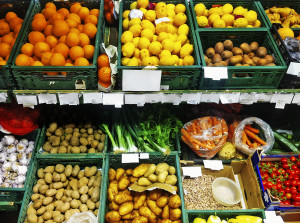-
Recent Posts
- California State Fair Honors Generations of Agricultural Legacy with 2025 Ag Heritage Awards
- Lowering the boom on illegal fireworks — CDFA teamed up with San Bernardino County Fire to confiscate 13 tons prior to July 4th
- $600 million for CDFA in new budget year
- A Pride Month Conversation with Cody Nicholson Stratton, of Foggy Bottoms Boys Farms
- Experience California Agriculture — Secretary Ross applauds new agritourism website from California Grown
Recent Comments
- William Griffin on Lowering the boom on illegal fireworks — CDFA teamed up with San Bernardino County Fire to confiscate 13 tons prior to July 4th
- Yvonne McCurley on A Pride Month Conversation with Cody Nicholson Stratton, of Foggy Bottoms Boys Farms
- Diana Shima on A Pride Month Conversation with Cody Nicholson Stratton, of Foggy Bottoms Boys Farms
- Andy on Experience California Agriculture — Secretary Ross applauds new agritourism website from California Grown
- EDWARD RING: Saving California’s rural water users ~ MAVEN'S NOTEBOOK | California Water News Central on Nine California Counties Make Top-10 List for Ag Sales in the U.S.
Archives
- July 2025
- June 2025
- May 2025
- April 2025
- March 2025
- February 2025
- January 2025
- December 2024
- November 2024
- October 2024
- September 2024
- August 2024
- July 2024
- June 2024
- May 2024
- April 2024
- March 2024
- February 2024
- January 2024
- December 2023
- November 2023
- October 2023
- September 2023
- August 2023
- July 2023
- June 2023
- May 2023
- April 2023
- March 2023
- February 2023
- January 2023
- December 2022
- November 2022
- October 2022
- September 2022
- August 2022
- July 2022
- June 2022
- May 2022
- April 2022
- March 2022
- February 2022
- January 2022
- December 2021
- November 2021
- October 2021
- September 2021
- August 2021
- July 2021
- June 2021
- May 2021
- April 2021
- March 2021
- February 2021
- January 2021
- December 2020
- November 2020
- October 2020
- September 2020
- August 2020
- July 2020
- June 2020
- May 2020
- April 2020
- March 2020
- February 2020
- January 2020
- December 2019
- November 2019
- October 2019
- September 2019
- August 2019
- July 2019
- June 2019
- May 2019
- April 2019
- March 2019
- February 2019
- January 2019
- December 2018
- November 2018
- October 2018
- September 2018
- August 2018
- July 2018
- June 2018
- May 2018
- April 2018
- March 2018
- February 2018
- January 2018
- December 2017
- November 2017
- October 2017
- September 2017
- August 2017
- July 2017
- June 2017
- May 2017
- April 2017
- March 2017
- February 2017
- January 2017
- December 2016
- November 2016
- October 2016
- September 2016
- August 2016
- July 2016
- June 2016
- May 2016
- April 2016
- March 2016
- February 2016
- January 2016
- December 2015
- November 2015
- October 2015
- September 2015
- August 2015
- July 2015
- June 2015
- May 2015
- April 2015
- March 2015
- February 2015
- January 2015
- December 2014
- November 2014
- October 2014
- September 2014
- August 2014
- July 2014
- June 2014
- May 2014
- April 2014
- March 2014
- February 2014
- January 2014
- December 2013
- November 2013
- October 2013
- September 2013
- August 2013
- July 2013
- June 2013
- May 2013
- April 2013
- March 2013
- February 2013
- January 2013
- December 2012
- November 2012
- October 2012
- September 2012
- August 2012
- July 2012
- June 2012
- May 2012
- April 2012
- March 2012
- February 2012
- January 2012
- December 2011
- November 2011
- October 2011
- September 2011
- August 2011
- July 2011
- June 2011
Categories
- AG Vision
- Agricultural Education
- Agricultural Marketing
- Alternative Fuels
- Animal health
- Animal Welfare
- Asian Citrus Psyllid
- Biodiversity
- Border stations
- BSE
- Cannabis
- Cannella Panel
- Climate Change
- Climate Smart Agriculture
- Community-based Food System
- Conservation
- Dairy
- Drought
- Environment
- Fairs
- Farm Bill
- Farm Labor
- Farmers' Markets
- Fertilizer
- Food Access
- Food Safety
- Food Waste
- Glassy-winged Sharpshooter
- Growing California
- Healthy soils
- HLB
- Hydrogen
- Integrated Pest Management (IPM)
- Invasive Species
- Light Brown Apple Moth
- Livestock ID
- Measurement Standards
- Nutrition
- Organic agriculture
- Pierce's Disease
- Pollinators
- Specialty Crops
- State Board of Food and Agriculture
- Succession Planning
- Trade
- Uncategorized
Pages
RSS

Governor Brown Issues Proclamation Declaring Real California Milk Month
Posted in Uncategorized
Leave a comment
Migrant farmworker housing: Part of the solution for our industry’s workforce – and their families

CDFA Secretary Karen Ross (middle-left) and Business, Consumer Services and Housing Secretary Anna Caballero tour the Harney Lane Migrant Center with manager Cesar Garza (left) and Housing and Community Development Acting Director Randall Deems (left).
Recently, I had the privilege of taking part in a tour of several housing centers for our state’s migrant farmworkers hosted by the California Department of Housing and Community Development. I was eager to participate in this tour with Business, Consumer Services and Housing Secretary Anna Caballero because of our shared commitment to work “across Cabinet” to improve existing and develop new affordable and decent housing for farmworkers and their families. Access to safe, affordable housing is just one of many issues critical to our rural agricultural communities.
Earlier this year we received a report from the California Agricultural Workforce Housing and Transportation Project with recommendations to address the challenges and barriers to providing adequate housing and transportation to the agricultural workforce (www.aginnovations.org/workforce). Seeing housing centers firsthand was very informative. We toured three centers – Harney Lane Migrant Center (Lodi), Empire Migrant Center (Ceres) and Westley Migrant Center. Our one-day tour underscored the critical importance of the effort that is needed in our rural areas to provide decent housing for hundreds of workers who plant, pick and process our fruits, vegetables, nuts and other agricultural commodities. These centers are not just a space to sleep and eat, but a place for families to live and belong.
The primary message I took away from this experience was a simple recognition of the progress that has been made. But there is much more that needs to be done! The long-term viability of California agriculture depends upon agricultural workers who need safe, reliable and affordable transportation to their places of employment and a home that reflects their dignity and importance. This will require effective coordination at the regional, state and federal levels to improve existing housing stock and develop new affordable housing for farmworkers and their families. I applaud the dedication of the county housing authority leaders and center managers I met on the tour, and I look forward to working with my colleagues and stakeholders to make real, concrete improvements in the form of walls and floors and playgrounds that can make a difference today, and that will stand as examples for continued progress.
Posted in AG Vision, Farm Labor
Tagged Anna Caballero, farmworker, housing, Karen Ross, migrant
Leave a comment
USDA launches new “Healthy Eating on a Budget” section of ChooseMyPlate.gov site
 The U.S. Department of Agriculture has unveiled Healthy Eating on a Budget – the newest addition to ChooseMyPlate.gov. Consumers continue to want more information about how to make better eating decisions with limited resources. To meet this need, the USDA’s Center for Nutrition Policy and Promotion (CNPP) developed the new resource to include easy-to-use and insightful information about planning meals, shopping smart in the grocery store, and preparing foods that save money and time in the kitchen.
The U.S. Department of Agriculture has unveiled Healthy Eating on a Budget – the newest addition to ChooseMyPlate.gov. Consumers continue to want more information about how to make better eating decisions with limited resources. To meet this need, the USDA’s Center for Nutrition Policy and Promotion (CNPP) developed the new resource to include easy-to-use and insightful information about planning meals, shopping smart in the grocery store, and preparing foods that save money and time in the kitchen.
“Although healthy foods aren’t always more expensive, many low-income people face time and resource challenges when it comes to putting healthy food on the table,” said Agriculture Secretary Tom Vilsack. “Promoting nutritious food choices can have a positive impact on improving the health and diet quality of Americans. USDA offers a broad spectrum of strategies to empower low-income families to purchase healthier foods.”
Consumers who visit the Healthy Eating on a Budget section of ChooseMyPlate.gov will learn ways to plan, purchase, and prepare healthy meals. The new web pages provide families with tips and strategies to help save money and plan a healthier diet. The new section includes the latest addition to the MyPlate 10 Tips Nutrition Education Series, Save More at the Grocery Store which emphasizes simple-to-use tips to help consumers make decisions as they walk down a supermarket aisle. Dozens of additional strategies are featured in the new section including using unit pricing, reading food labels to compare items, and checking sales on store brands. A new cookbook features 25 recipes from the Supplemental Nutrition Assistance Program (SNAP) resource page, SNAP-Ed Nutrition Connection. The recipes are included in sample two-week menus based on a 2,000 calorie diet to help individuals and families plan meals. Additional grocery and pantry lists are provided to help households organize their food purchases.
“This resource not only demonstrates that it is possible to eat healthfully on a budget, but it shows how,” said CNPP Deputy Director Jackie Haven. “These new pages complement our existing resources on ChooseMyPlate.gov, allowing consumers to figure out how to improve their nutrition, and how to make it affordable.”
Healthy Eating on a Budget supports other initiatives in progress at USDA to encourage healthy eating among more Americans. Examples include:
- ChooseMyPlate.gov provides practical information to individuals, health professionals, nutrition educators, and the food industry to help consumers build healthier diets with resources and tools for dietary assessment, nutrition education, and other user-friendly nutrition information. As Americans are experiencing epidemic rates of overweight and obesity, the online resources and tools can empower people to make healthier food choices for themselves, their families, and their children.
- USDA Summer Feeding Program (SFSP) ensures that low-income children continue to receive nutritious meals during the summer months, when school breakfast and lunch are not available. Free meals, that meet Federal nutrition guidelines, are provided to all children 18 years old and under at approved SFSP sites in areas with significant concentrations of low-income children. Summer site locations vary by state.
- The Supplemental Nutrition Assistance Program (SNAP) helps millions of Americans put food on the table. Through programs such as the Healthy Incentives Pilot and grants to increase access to SNAP at farmers markets, SNAP provides low-income families with expanded access to healthy food.
- The Special Supplemental Nutrition Program for Women, Infants and Children (WIC) provides nutrition education, breastfeeding support, and supplemental foods to infants, young children, and pregnant, breastfeeding and post-partum women to improve health outcomes and support healthy childhood development. Recently, USDA announced an update to the foods provided through the WIC program to include more fruits and vegetables, whole grains and low-fat dairy products.
With so many food options available, it is often difficult for consumers to determine the best foods to put on their plates when the budget is tight. Healthy Eating on a Budget provides practical information to help more Americans understand their options and supports USDA initiatives to help families make healthy eating a priority in their daily lives.
Want to be happier? Eat your vegetables! – from the Silver Lining Psychology blog
When you were a kid, did your mother urge you to eat your vegetables? If your home-life was anything like mine, you were presented with a constant array of veggies at dinner time. Some, like corn and carrots, I wolfed down enthusiastically, while others were consumed under duress (beets, turnips, and brussel sprouts come to mind).
My parents’ main line of reasoning for eating vegetables was that they were part of a nutritious diet that would help to make me big and strong. What they didn’t know at the time, was that a well-balanced vegetable-rich diet also contributes to greater emotional wellbeing.
Here are a few of the fascinating research findings:
1. In one study, British young adults completed a daily diary for three weeks in which they logged their negative moods, positive moods, and food consumption. An analysis of the data indicated that the day after the subjects consumed more fruits and vegetables, they also experienced more positive emotions. The authors concluded that consuming the fruits and vegetables actually drove the positive moods that followed, and found the ideal amount to consume was 7-8 fruits and vegetables per day.
2. Another study of 80,000 British adults found that emotional wellbeing increased with the number of fruit and vegetables eaten each day. Like the previously-mentioned study, seven servings proved to be the sweet spot – beyond that, there was not much more benefit.
3. A study of 5,731 Norwegian adults found that individuals who consumed a healthy diet were less likely to be depressed compared to those who ate a more typical Western diet filled with processed foods. This study also found that a processed diet is associated with increased incidence of anxiety. In another study, these same researchers found that a balanced and nutritious diet was associated with better mental health in a sample of 3040 Australian adolescents compared to those who had a diet that was rich in processed foods.
4. The effects of nutrition on mental health may start in the womb. Another study of Norwegian subjects examined the diets of mothers during pregnancy, and at various points during their children’s first 5 years. Results showed that babies who were exposed to more unhealthy foods during pregnancy had more behavioral and emotional problems during early childhood.
5. Diet can also affect your cognitive abilities. In one study, twenty sedentary men were either fed a nutritionally balanced diet or a high-fat diet for seven days. Compared to the control group, the high-fat group showed decreased memory and attention.
The bottom line? What you eat not only affects your body, it affects your mind. Make the effort to eat a nutritionally-balanced diet that is filled with natural food sources and low on refined and processed foods. Aim for 7-8 servings of fruits and vegetables a day. Not only will it make you big and strong, it will also make you happier!
Lodi 10th annual ‘Zinfest’ a celebration of community
I recently was invited to Lodi to join that region’s Winegrape Commission in celebrating the 10th annual “Zinfest.” It’s a great example of food and wine events that create local economic activity and foster direct communication between consumers and farmers.
Zinfest is very well done – a testament to the visionary leaders who created the Lodi Winegrape Commission, and to the outstanding farm families that have forged partnerships with the local community to make it known that Lodi is a premium grape-growing and wine-making region.
I’d like to thank the commission for its kind invitation and I hope I get to celebrate many more Zinfests!
Posted in Uncategorized
Leave a comment
Rescued calf gets high-tech prosthetics – from the Associated Press via the Fresno Bee

Wearing his new prosthetic legs Hero gets a taste of shrubbery Wednesday, May 21, 2014, in Houston. The abandoned calf rescued from a Virginia farm a year ago and brought to Texas after it nearly died is getting permanent prosthetics to replace back hooves that had to be amputated because of frostbite. PAT SULLIVAN — AP Photo
By Michael Graczyk
HOUSTON — Hot and tired from a three-hour drive inside a trailer behind a pickup truck, the 600-pound English Charolais calf was content to lay on the grass behind a south Houston building while a team of technicians worked on its hind legs.
When the calf known as Hero heard its name called, the 15-month-old gingerly got up, unsteadily rocked a bit, then waddled away, tail wagging, eyes wide and tongue licking. It headed across a patch of concrete toward an appetizing snack of green shrubbery a few yards away.
Hero became what may be the nation’s only double-amputee calf with prosthetics on Wednesday when fitted for a new pair of high-tech devices attached to its back legs.
“I’m so proud,” Hero’s caretaker, Kitty Martin, exclaimed. “Look at you!”
It’s the latest step in a year-long effort that has taken Martin and the animal from Virginia, where she rescued it last year from an Augusta County farm where it succumbed to frostbite that claimed its hooves, to Texas. Animal surgeons at Texas A&M University treated Hero for several months and affixed the initial prosthetics that the calf now had outgrown.
“This is our first cow,” Erin O’Brien, an orthotist and prosthetist for Hanger Inc., an Austin-based national firm that makes prosthetic limbs. She was among a team of about eight people working on the project for about two weeks.
“We did a lot of study of photos and video of cows just regular walking to see what it looks like and see if we can mimic that biomechanically,” O’Brien said. “It’s unusual, yes, but an opportunity.”
Surgeons at Texas A&M accepted Martin’s initial pleas for help, removing about two inches of bone to enable them to create a pad of tissue that would allow for prosthetics.
“Until I worked on him, I hadn’t ever done it before. And I’d not heard of (prosthetics) before in a bovine,” said Ashlee Watts, an equine orthopedic surgeon at the school.
Martin figures she has spent nearly $40,000 to save the calf.
“I don’t know how to explain it,” she said. “I’m an animal rescuer. And he had everything against him.”
Hero’s hooves are custom made of urethane and titanium, the connecting components are titanium and carbon fiber and the sockets that attach to his legs are carbon fiber and acrylic resin. Martin and O’Brien declined to discuss the cost, but estimated that similar devices for humans go for between $4,000 and $8,000 apiece.
Hero’s sockets are painted with black and white cow spots. “Holstein legs,” O’Brien laughed.
“We like to customize legs to the person’s personality,” she said.
Martin, 53, a former veterinary technician and retired truck driver originally from Dalhart, in the Texas Panhandle, is moving with her husband from Greenville, Virginia, to Cameron in Central Texas. She’s hoping Hero, who could grow to 1,500 pounds, can be a therapy animal for wounded veterans and special needs children.
“It makes my day,” Martin said. “He’s got a very bright future right now.”
Posted in Uncategorized
Leave a comment
Heritage Harvests – from the Growing California video series
The latest video in the Growing California video series, a partnership with California Grown, is Heritage Harvests, a profile of the Rominger family farm in Yolo County.
Posted in Uncategorized
1 Comment
UC Davis Study Determines Preliminary Findings of Economic Impact of Drought in Central Valley – News Release
California’s drought will deal a severe blow to Central Valley irrigated agriculture and farm communities this year and could cost the industry $1.7 billion and cause more than 14,500 workers to lose their jobs, according to preliminary results of a new study by the UC Davis Center for Watershed Sciences.
Researchers estimated that Central Valley irrigators would receive only two-thirds of their normal river water deliveries this year because of the drought.
The preliminary analysis represents the first socio-economic forecast of this year’s drought, said lead author Richard Howitt, a UC Davis professor emeritus of agricultural and resource economics.
“We wanted to provide a foundation for state agricultural and water policymakers to understand the impacts of the drought on farmers and farm communities,” Howitt said.
The Central Valley is the richest food-producing region in the world. Much of the nation’s fresh fruits, nuts and vegetables are grown on the region’s 7 million acres of irrigated farmland.
The center plans to release a more comprehensive report of the drought’s economic impact on the state’s irrigated agriculture this summer.
The analysis was done at the request of the California Department of Food and Agriculture, which co-funded the research along with the University of California.
“These estimates will help the state better understand the economic impacts of the drought, ” said CDFA Secretary Karen Ross. “The research confirms where emergency drought assistance will be needed most, and efforts are already underway.”
The UC Davis researchers used computer models and the latest estimates of State Water Project, federal Central Valley Project and local water deliveries and groundwater pumping capacities to forecast the economic effects of this year’s drought.
The analysis predicted several severe impacts for the current growing season, including:
- Reduced surface water deliveries of 6.5 million acre-feet of water, or 32.5 percent of normal water use by Central Valley growers. An acre-foot is enough water to cover an acre of land in a foot of water, or enough water for about two California households for a year.
- Fallowing of an additional 410,000 acres, representing 6 percent of irrigated cropland in the Central Valley.
- The loss of an estimated 14,500 seasonal and full-time jobs. About 6,400 of these jobs are directly involved in crop production.
- A total cost of $1.7 billion to the Central Valley’s irrigated farm industry this year, including about $450 million in additional costs of groundwater pumping.
- About 60 percent of the economic losses will occur in the San Joaquin Valley and Tulare Lake Basin.
Growers are expected to replace much of the loss in project water deliveries with groundwater, California’s largest source of water storage during drought years, said co-author Jay Lund, director of the Center for Watershed Sciences and a UC Davis professor of civil and environmental engineering.
“Without access to groundwater, this year’s drought would be truly devastating to farms and cities throughout California,” Lund said.
The additional pumping will cost an estimated $450 million and still leave a shortage of 1.5 million acre-feet of irrigation water, about 7.5 percent of normal irrigation water use in the Central Valley, according to the forecast.
While the current drought is expected to impose major hardships on many farmers, small communities and the environment, it should not threaten California’s overall economy, Lund said.
Other authors on the report are UC Davis agricultural economist Josue Medellin-Azuara and Duncan MacEwan of the ERA Economic consulting firm in Davis.
Posted in Uncategorized
1 Comment
Secretary Ross joins elementary school students to experience Mobile Dairy Classroom

Secretary Ross (center) with students at Pacific Elementary School, principal Dr. Shana Henry (left), Sarah Hanson of CDFA’s Farm to Fork Office (far left), Tammy-Anderson Wise, CEO of the Dairy Council of California (right), instructor Kimberlee Youman (kneeling) and Tootsie the calf.
Earlier this month, CDFA Secretary Karen Ross joined students at Sacramento’s Pacific Elementary School for a visit from the Mobile Dairy Classroom, where an instructor shared fun facts like: cows have built-in fly swatters, and milk is warm when it comes out of the udder.
As the original farm to school program in California, Mobile Dairy Classroom has brought a bit of the dairy farm to schools across the state since the 1930s. To help children better appreciate where their milk and milk products come from, the free assemblies provided by the Dairy Council of California teach children about agriculture and cows, healthy eating from all five food groups, and how to lead healthy, active lifestyles. Mobile Dairy Classroom assemblies augment the Dairy Council of California’s classroom nutrition education lessons that are also free to schools as part of the dairy industry’s commitment to community health.
With six Mobile Dairy Classroom units across California, 400,000 students each year have the chance to make a personal connection with a cow and a calf, and better understand where their milk comes from. Furthermore, the assemblies allow for a better appreciation for the role of the dairy farmer and milk processor in providing healthy food and why milk and milk products are an essential part of an overall balanced diet with foods from all five food groups.
Posted in Uncategorized
Leave a comment
Atwater High School FFA students qualify for national finals for first time in school history – from the Merced Sun Star

Atwater FFA’s Julie Dailey, Katelyn Baptista, Goldi Vang, Emmanual Avila, and Hans van Warmerdam compete in the Milk Quality and Dairy Products competition during the MJC FFA Field Day competition in March.
By Doane Yawger
For the first time in school history, Atwater High School’s chapter of the National FFA Organization earned three state championships and will represent the state at the national FFA finals in October in Louisville, Ky.
Atwater’s ag mechanics, agronomy and milk quality-dairy foods teams captured first place awards. That sets in motion a drive to raise the $30,000 necessary to send the dozen students to the nation’s capital for a leadership conference and then to Louisville, where the competition may be even stiffer than it was earlier this month at California Polytechnic State University, San Luis Obispo.
Dave Gossman, FFA adviser, said this is the first time the ag mechanics squad has captured a first place. Ag mechanics encompasses welding and metal fabrication. It involves woodworking, electrical, oxy-fuel welding and cutting skills, and tool identification.
Gossman said the Atwater High ag program has tremendous support from the community and the local agricultural industry. He said Atwater teams have traditionally done well in the past in the milk judging events and agronomy events.
“It was a tremendous day for Atwater FFA where the heart, passion, efforts and skills of our students all came together when it all mattered,” said Sam Meredith, FFA adviser and ag mechanics coach.
Gossman said this is the fourth-straight championship for the agronomy team and the third-straight for the milk quality and dairy foods team.
“What makes this special is the fact that when a team wins the championship, those students cannot compete again on the team the following years,” Gossman said. “So the accomplishments of those teams have been done with a new team of students each year.”
Agronomy students competed in the evaluation, identification and quality of various weeds, crops and seeds. Students judge various classes of hay crops and seeds and have to give four sets of oral presentations to judges, explaining why they placed a class in a certain way.
Gossman said the FFA’s goal is to win the national championship in milk and dairy products and place in the top five or 10 in the ag mechanics and agronomy competitions.
Posted in Uncategorized
Leave a comment




